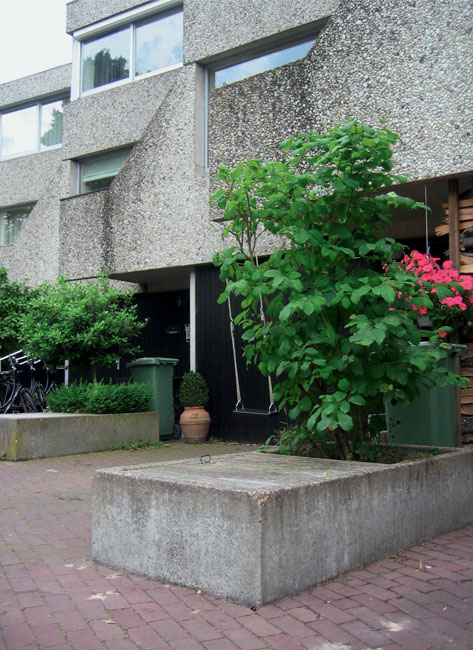Park Rozendaal versus de Krekenbuurt
Maakbaarheid van collectiviteit
Samenvatting
Woonerfwijken staan momenteel zeer in de belangstelling. Niet om hun ruimtelijke kenmerken, wel vanwege de naderende herstructureringsopgave die vooral de bulk van de bouwproductie uit de jaren zeventig en tachtig betreft. In die bulk bevinden zich onverwachte ‘parels’. Soms heeft de onmiskenbare kwaliteit van zo’n wijk te maken met het stedenbouwkundig plan – of de als woonerf ingerichte gedeelten daarvan; maar het kan ook gaan om de architectuur, of de ruimtelijke opzet van de woning zelf.
Bijzondere woonerfwijken zijn Park Rozendaal in Leusden, de Leyens in Zoetermeer, maar ook Baggelhuizen in Assen en de Krekenbuurt in Zwolle. De kwaliteit van deze erven wordt bepaald door een overmaat aan ruimte, de afstand tussen de woningen, de inrichting van het erf en de wijze waarop bewoners het erf gebruiken. In deze erven zijn bijzondere woningtypologieën te vinden, een gevolg van de horizontale en verticale schakeling van woningen, waardoor er ook ruimtelijke kwaliteiten ontstaan in het interieur. Deze ontworpen overmaat biedt onder andere ruimte voor hobbytafels onder het dak, speelplekken op de entresol en extra kamers die naar eigen inzicht zijn te gebruiken.
Uit de opzet van deze grote en kleine ‘parels’ blijkt dat er subtiele overgangen zijn ontworpen op het erf en in de woning. Collectieve voorzieningen dragen voorts bij aan de saamhorigheid op het erf en wijkniveau. Hoe is de collectieve invloedssfeer hier vormgegeven of georganiseerd? En op welke wijze, en dat is misschien tegenwoordig nog wel belangrijker, wordt de privacy van de bewoners afgeschermd?
In dit artikel wordt de collectieve invloedssfeer in Park Rozendaal in Leusden en in de Krekenbuurt in Zwolle in beeld gebracht. De wisselwerking tussen het private en het collectieve domein zorgt voor een bedachtzaam evenwicht in beide wijken, dat architectonisch wordt vormgegeven door middel van een reeks bouwkundige elementen. Deze precies ontworpen overgangselementen dragen bij aan het gebruik, de beleving en de ruimtelijke samenhang van de erven. Ze maken de typologie van het woonerf bijzonder, maar ook gedateerd en kwetsbaar, tenzij daar, zoals uit de voorbeelden van Park Rozendaal en de Krekenbuurt blijkt, een zorgvuldig beheerplan aan ten grondslag ligt.



